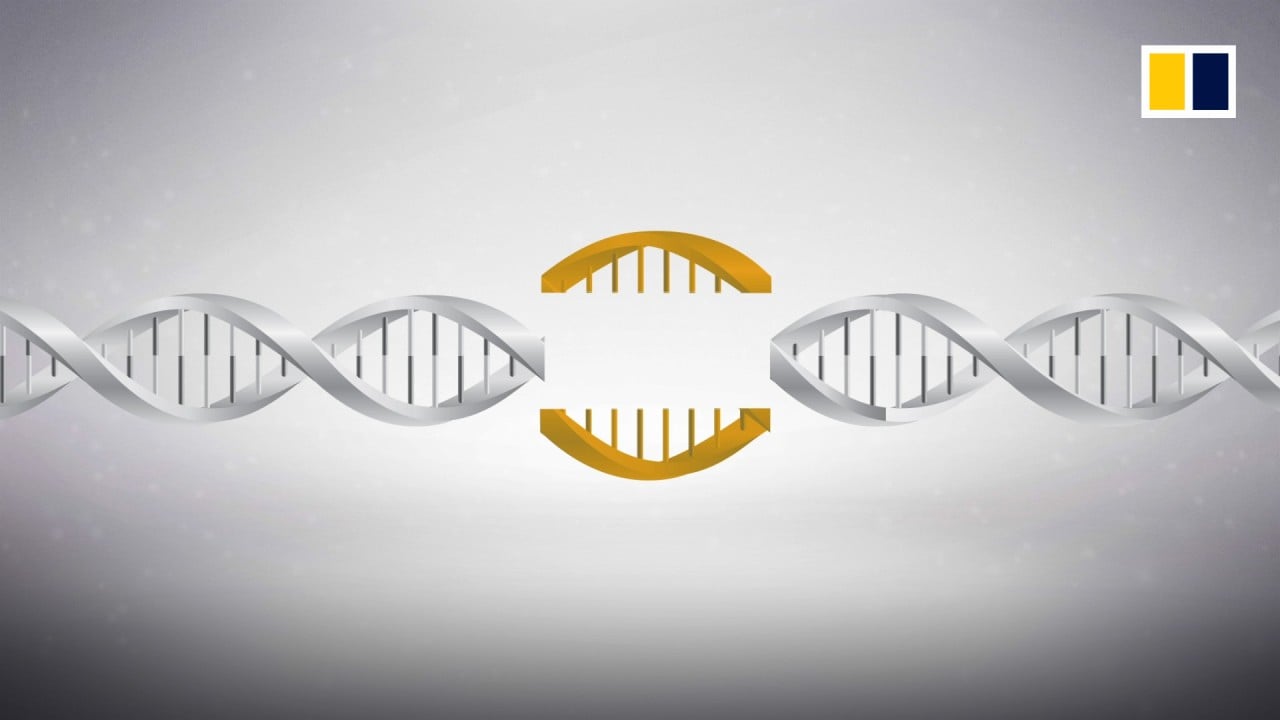
Chinese gene therapy ‘clinically cured’ patient with blood disorder thalassaemia, researchers say
-
One-time treatment offers hope that people with one of the world’s most common inherited blood disorders could avoid transfusions
-
Innovative gene-editing technique CS-101 has distinct advantages over existing CRISPR-based therapies, according to researchers
Shanghai-based CorrectSequence Therapeutics, along with collaborators from Guangxi Medical University, announced on Monday that they had cured an adolescent patient with transfusion-dependent beta thalassaemia.
“To the best of our knowledge, this is the world’s first report of a successful clinical cure of haemoglobinopathy with base-editing technology,” CorrectSequence said in its news release.
The patient, who had been undergoing blood transfusions every two weeks to manage the condition, has not required a transfusion for more than two months since receiving the treatment, the company said.
The patient “has resumed normal life” after receiving the one-time treatment, known as CS-101, CorrectSequence said.
While studies on CS-101 are still pending long term data, Androulla Eleftheriou, executive director of the Thalassaemia International Federation (TIF), said the design of CorrectSequence’s editor “greatly enhances the safety of the approach compared to other advanced therapy application”.
Beta thalassaemia is an inherited recessive blood disorder that results in a person’s blood cells lacking enough haemoglobin, a blood protein that carries oxygen throughout the body.
Without regular treatment, the shortage of oxygen caused by the condition, which is caused by a mutation in the beta-globin gene, can cause fatigue, anaemia, delayed development, jaundice, a swollen abdomen, bone weakness and organ damage.
Patients with the most severe form of the condition – transfusion-dependent beta thalassaemia – rely on regular blood transfusions to help manage their symptoms.
The blood disorder is most common among people in South Asia, the Mediterranean, the Middle East and Africa, according to the Cleveland Clinic.
Thalassaemia is one of the most common hereditary conditions in China, with people in the south at the highest risk for the disease, according to the Northern California Comprehensive Thalassemia Centre.
Thalassaemia is part of a group of disorders called haemoglobinopathies, which includes sickle cell disease known for its abnormal production and structure of haemoglobin.
Haemoglobinopathies are the “most common group of monogenic diseases in the world”, with around 400,000 children born with the disorders each year, according to CorrectSequence.
The adolescent patient treated using CS-101 had been receiving transfusions twice a month since the age of two, but was able to stop them just two weeks after receiving the treatment in October.
CS-101 is a personalised base-editing treatment that works by editing stem cells. Haematopoietic stem cells – ones that can differentiate into any kind of blood cell – are first collected from the patients.
The edited stem cells are then injected into the patient, enabling them to “continuously produce blood cells with intact haemoglobin and eliminating the need for frequent blood transfusions”, the company said.
CS-101 is not the first gene-editing therapy used to treat haemoglobinopathies.

01:54
CRISPR/Cas9: a gene-editing tool with promise and peril
But the mechanisms behind the two editors work differently.
CS-101 relies on innovative transformer base-editing technology, which allows editing on individual DNA base pairs without the need for a double-strand break.
“CS-101 does not harbour safety risks such as large DNA fragment deletions, chromosomal rearrangements, or off-target mutations,” CorrectSequence said.
While base editors minimise the risk of double-strand breaks, Eleftheriou noted that they can still occur “inadvertently.”
Compared to CRISPR-based therapies, treatment with CS-101 also enables patients to become transfusion-free sooner, due to the faster recovery rate to normal haemoglobin levels, the company said.
Eleftheriou noted that there are still challenges associated with gene editing therapies for hemoglobinopathies, including potential long term side effects and “the possibility the ‘cure’ may not be permanent.”
However TIF supports “any progress towards a curative approach for thalassaemia and other hemoglobin disorders,” she said.
In China, many patients with transfusion-dependent thalassaemia cannot afford the frequent transfusions, which can cost 100,000 yuan (US$14,000) a year, according to a paper published in the journal Chinese Public Health last October.
On top of the high costs, domestic blood supply shortages mean that some patients cannot receive their blood transfusions on time, according to the paper.
CorrectSequence said clinical applications of innovative gene therapies boost hopes for “one-time treatment, lifetime cure” for patients around the world with severe genetic diseases.
The adolescent patient received the treatment during an investigator-led trial, along with another adult patient who the team said has also been transfusion-free for a month.
The team is preparing further studies to assess the efficacy and safety of their therapy on beta thalassaemia, and are also setting up a trial for patients with sickle cell disease.



